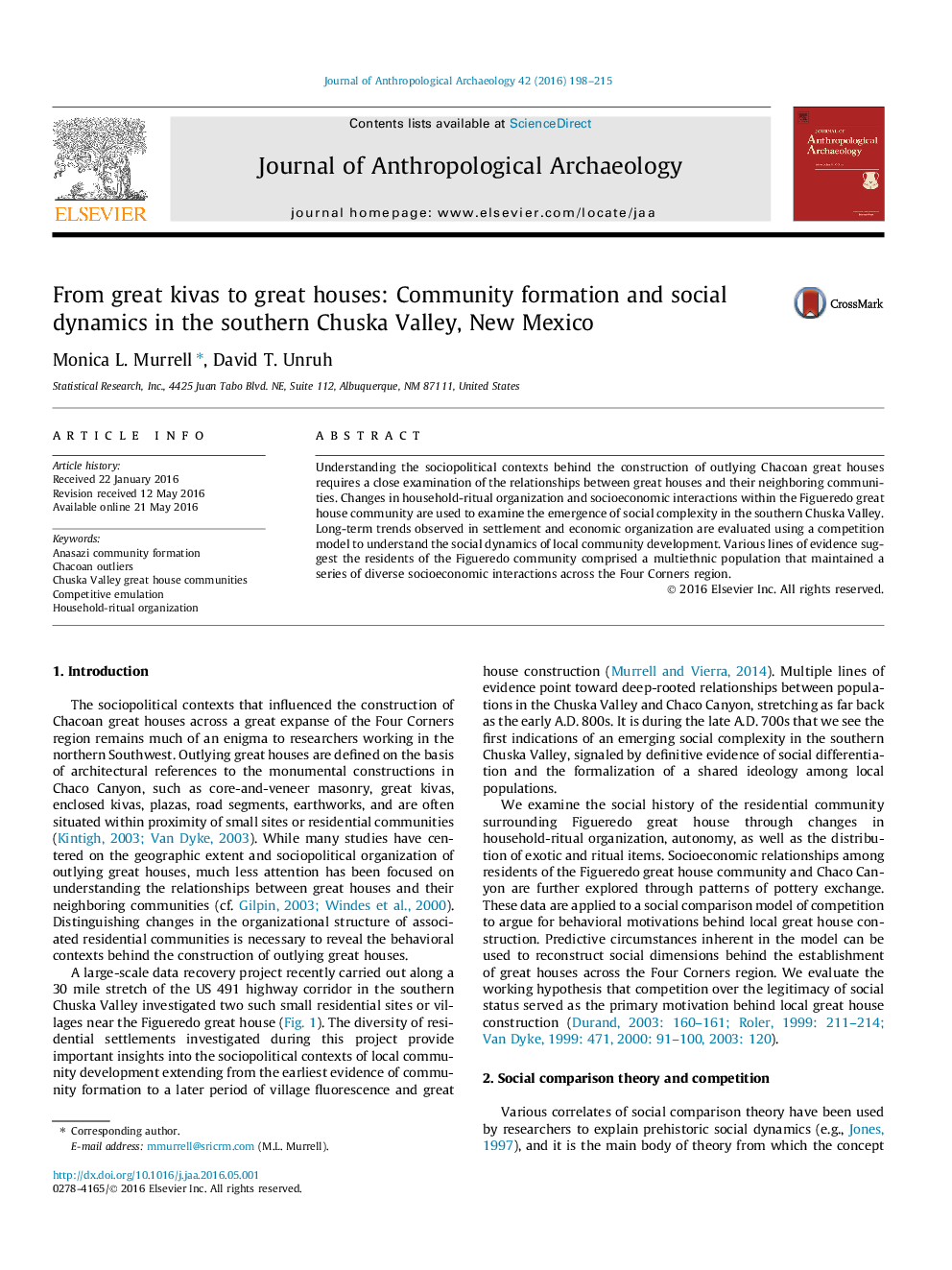| Article ID | Journal | Published Year | Pages | File Type |
|---|---|---|---|---|
| 1034868 | Journal of Anthropological Archaeology | 2016 | 18 Pages |
•Chacoan outlier communities represent an in situ development of social complexity.•We use a competition model to examine trends in settlement and economic organization.•Competitive emulation is attributed to the Figueredo great house construction.
Understanding the sociopolitical contexts behind the construction of outlying Chacoan great houses requires a close examination of the relationships between great houses and their neighboring communities. Changes in household-ritual organization and socioeconomic interactions within the Figueredo great house community are used to examine the emergence of social complexity in the southern Chuska Valley. Long-term trends observed in settlement and economic organization are evaluated using a competition model to understand the social dynamics of local community development. Various lines of evidence suggest the residents of the Figueredo community comprised a multiethnic population that maintained a series of diverse socioeconomic interactions across the Four Corners region.
